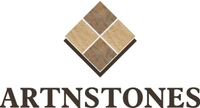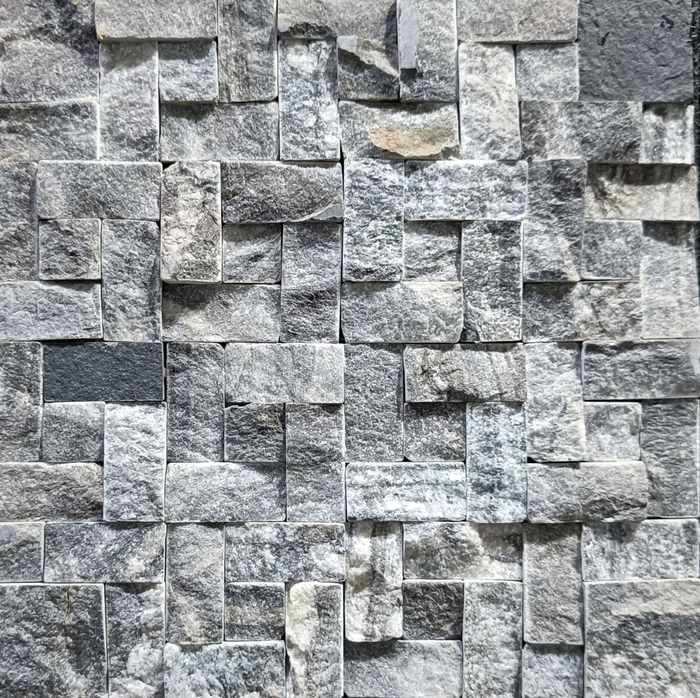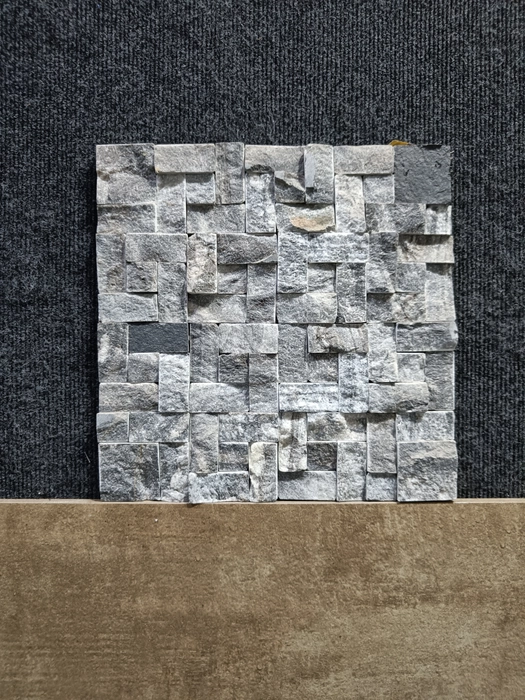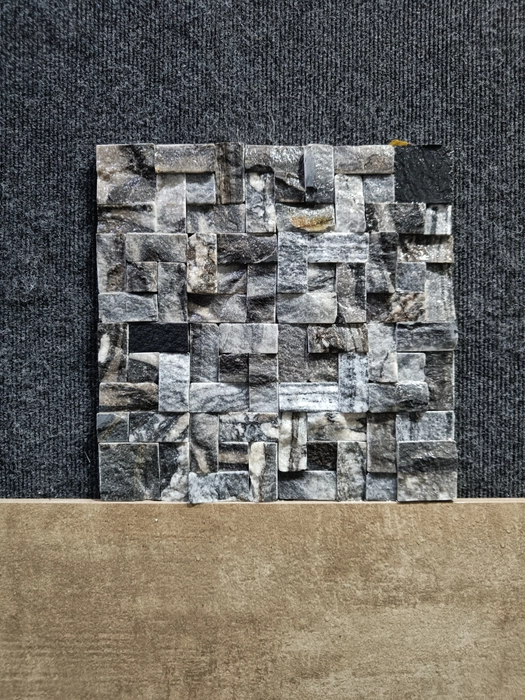Kandla Roman Grey Pattern
Product details
"Kandla Roman Grey Pattern Stone Cladding" refers to a specific type of stone cladding made from Kandla Grey sandstone and arranged in a Roman pattern format. Here's a detailed overview:
Kandla Grey Sandstone:
- Material: Kandla Grey sandstone, known for its durability, natural beauty, and distinctive grey color with subtle variations.
- Texture: The surface may have a natural split, honed, or sawn finish, depending on the desired aesthetic.
- Origin: Quarried in the Kandla region of India, this stone is renowned for its quality and versatility.
Roman Pattern:
- Layout: The Roman pattern typically consists of smaller rectangular or square pieces of stone arranged in a repeating pattern, often resembling a mosaic or intricate geometric design.
- Design: The pattern may feature alternating sizes of stones or a combination of different shapes to create visual interest.
- Installation: The stones are typically mounted on mesh-backed sheets for easier installation and alignment.
Stone Cladding:
- Purpose: Stone cladding serves both functional and aesthetic purposes, providing protection to the underlying structure while enhancing the visual appeal of the space.
- Installation: The cladding is applied to the wall surface using suitable adhesives and fasteners, ensuring proper alignment and spacing.
- Applications: Suitable for both interior and exterior walls, stone cladding adds texture, character, and warmth to various architectural designs.
















